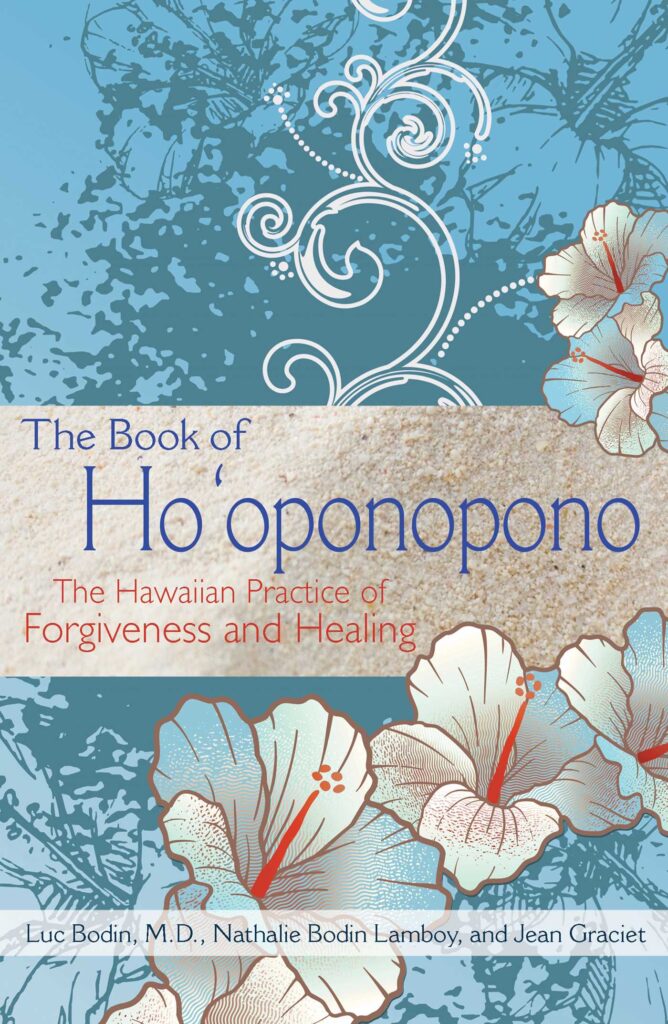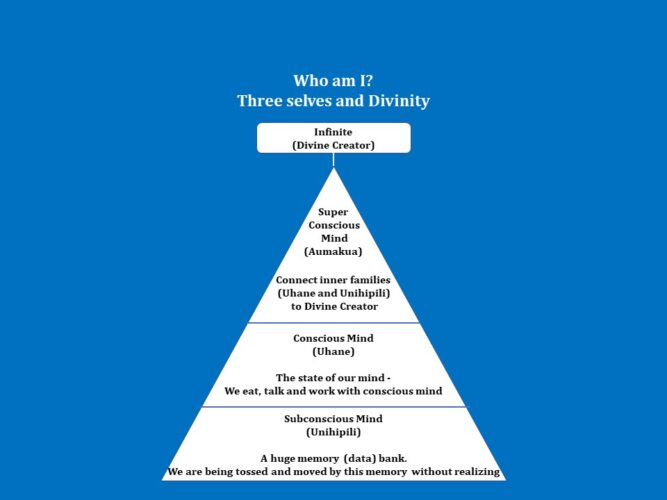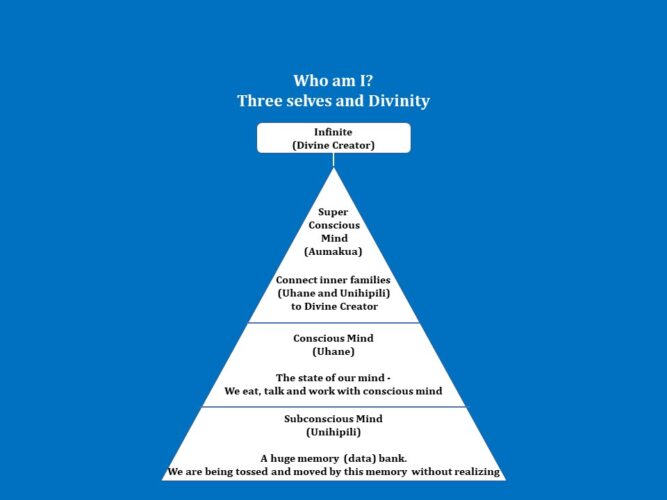In this article, we explore how Ho’oponopono, a traditional Hawaiian practice, addresses the concept of memories. Delving into the ancient wisdom of Ho’oponopono, we will discover how this healing technique acknowledges and transforms the role of memories in our lives. From understanding the power of forgiveness to the release of emotional baggage, join us on a journey to learn how Ho’oponopono offers a unique perspective on the impact of memories and how they can be healed.
Understanding Ho’oponopono
Ho’oponopono is an ancient Hawaiian practice that focuses on healing and personal transformation. It is based on the belief that memories play a crucial role in our well-being and that by acknowledging and releasing these memories, we can experience emotional healing, improved relationships, and personal growth. To fully grasp the significance of memories in Ho’oponopono, let’s explore the meaning and origins of this practice as well as its core principles.
Meaning and Origins
The term “Ho’oponopono” can be translated as “to make right” or “to correct” in the Hawaiian language. It originated from the traditional Hawaiian culture, where it was used as a method to resolve conflicts within families and communities. Over time, it has evolved into a spiritual and therapeutic practice that focuses on internal healing and self-transformation.
Core Principles
At the core of Ho’oponopono are four key principles: repentance, forgiveness, gratitude, and love. These principles serve as a guide for individuals seeking to address their memories and create positive change in their lives.
Repentance involves acknowledging and taking responsibility for one’s actions, thoughts, and emotions. It is about recognizing that we have the power to choose how we respond to our memories and the impact they have on our lives.
Forgiveness plays a crucial role in Ho’oponopono. It is the act of releasing negative emotions and grievances associated with memories. By forgiving ourselves and others, we free ourselves from the emotional burdens that memories can create.
Gratitude is an integral part of Ho’oponopono. It involves expressing appreciation and acknowledging the abundance in our lives, even in the face of challenging memories. Gratitude helps shift our focus from negative memories to positive aspects of our experiences.
Love is considered the ultimate healing force in Ho’oponopono. Through love, we can cultivate compassion and understanding for ourselves and others. By approaching memories with love, we can release the emotional attachments and negative energies associated with them.
The Role of Memories in Ho’oponopono
In Ho’oponopono, memories are viewed as energetic imprints that influence our thoughts, emotions, and behaviors. These imprints can stem from past experiences, ancestral patterns, and collective consciousness. The practice recognizes that memories have a profound impact on our well-being and that addressing them is essential for personal growth and healing.
Concept of Memories in Ho’oponopono
Definition of Memories in Ho’oponopono
In Ho’oponopono, memories encompass more than just recollections of past events. They also include limiting beliefs, emotions, and traumas that are stored within our subconscious mind. Memories are seen as energy patterns that shape our perceptions, decisions, and interactions with the world.
The Significance of Memories
Memories hold immense power over our lives. They influence our thoughts, emotions, and actions, often unconsciously. By understanding the significance of memories in Ho’oponopono, we become aware of the impact they have on our well-being and overall life experience.
By shedding light on our memories, we can uncover the underlying patterns that contribute to recurring challenges, limiting beliefs, and negative emotions. This awareness enables us to take responsibility and make conscious choices to release and transform these memories.
The Influence of Memories on Our Well-being
Our memories, both positive and negative, shape our perception of reality and impact our emotional and physical well-being. Negative memories can contribute to stress, anxiety, depression, and relationship difficulties. They may manifest as self-sabotaging behaviors, limiting beliefs, and unresolved emotional wounds.
Ho’oponopono recognizes that by addressing and clearing negative memories, we can restore harmony within ourselves and in our relationships. By releasing the energetic attachments and emotional burdens associated with memories, we create space for healing, growth, and increased well-being.

Process of Memory Release in Ho’oponopono
Recognizing Memories
The first step in the process of memory release in Ho’oponopono is becoming aware of the memories that are influencing our lives. This requires honest self-reflection and introspection. We must be willing to observe our thoughts, emotions, and behaviors without judgment and identify the memories that are at play.
Recognizing memories involves noticing patterns, triggers, and recurring themes in our lives. It requires a willingness to delve into our past experiences and explore the emotions and beliefs associated with them. Through self-awareness, we can begin to understand the memories that are shaping our present reality.
Taking Responsibility for Memories
Once we have recognized the memories that are influencing our lives, the next step is taking responsibility for them. In Ho’oponopono, taking responsibility does not mean taking blame or guilt. Instead, it means acknowledging that we have the power to choose how we respond to our memories and the impact they have on us.
Taking responsibility involves understanding that our memories are a product of our thoughts, emotions, and beliefs. We are not victims of circumstance but active participants in creating our reality. By accepting responsibility, we empower ourselves to make conscious choices and release the hold that memories have on us.
Releasing Memories through Forgiveness
The final step in the process of memory release in Ho’oponopono is forgiveness. Forgiveness is a powerful tool for releasing the emotional attachments and negative energies associated with memories. It involves letting go of resentment, anger, and grievances towards ourselves and others.
In Ho’oponopono, forgiveness is not dependent on receiving an apology or resolution from others. It is an internal process of letting go and freeing ourselves from the burdens of the past. By forgiving ourselves and others, we create space for healing, growth, and transformation.
Healing Power of Ho’oponopono on Memories
Clearing Emotional Blockages
Ho’oponopono has a profound healing power when it comes to clearing emotional blockages caused by memories. By acknowledging and releasing the emotional attachments associated with memories, we can free ourselves from the negative impact they have on our well-being.
Through the practice of Ho’oponopono, we can cultivate emotional awareness and develop tools to process and release challenging emotions. By embracing forgiveness, gratitude, and love, we create a nurturing environment where emotional healing can take place.
Shifting Perspective on Past Experiences
Ho’oponopono has the ability to help us shift our perspective on past experiences by viewing them through the lens of forgiveness and love. By releasing the negative emotions and attachments associated with memories, we can reframe our perception and find meaning and lessons in even the most challenging experiences.
Through the practice of Ho’oponopono, we can cultivate a sense of detachment from the past and develop a new narrative that empowers us. This shift in perspective allows us to let go of victimhood and embrace personal responsibility for our own well-being and growth.
Transforming the Impact of Memories
Ho’oponopono offers a transformative approach to memories by focusing on releasing their negative impact and cultivating healing and growth. By addressing memories with love, forgiveness, and gratitude, we can transform their energetic imprints and create a more positive and empowering reality.
Through Ho’oponopono, we have the opportunity to redefine our relationship with memories. Instead of being controlled or limited by them, we can use them as catalysts for personal evolution and self-awareness. This transformation opens the door to a life of greater peace, joy, and fulfillment.

Ho’oponopono Techniques for Addressing Memories
Ho’oponopono Prayer
The Ho’oponopono prayer is a simple yet powerful technique for addressing memories. It involves repeating the following four phrases: “I’m sorry, please forgive me, thank you, I love you.” These phrases are directed towards ourselves, others, and a higher power, depending on the specific memory being addressed.
The Ho’oponopono prayer serves as a tool for expressing repentance, forgiveness, gratitude, and love. It helps to release the emotional attachments and negative energies associated with memories, fostering healing and transformation.
Meditation and Visualization
Meditation and visualization are commonly used techniques in Ho’oponopono to address memories. By practicing mindfulness and directing our attention inward, we can observe our thoughts, emotions, and memories without judgment. This allows us to create space for healing and transformation.
During meditation, we can visualize the memories we wish to address and imagine them being surrounded by love and light. By visualizing the release of negative emotions and attachments, we can invite healing and transformation into our lives.
Self-Reflection and Journaling
Self-reflection and journaling are valuable tools for addressing memories in Ho’oponopono. By engaging in self-reflection, we can deepen our understanding of the memories that are influencing our lives. Journaling provides a safe space to explore and express our thoughts, emotions, and insights related to these memories.
Through self-reflection and journaling, we can gain clarity, release emotions, and uncover patterns and beliefs associated with memories. These practices support the process of memory release and create a pathway for healing, growth, and self-awareness.
Benefits of Applying Ho’oponopono on Memories
Emotional Healing and Stress Reduction
One of the primary benefits of applying Ho’oponopono on memories is emotional healing and stress reduction. By addressing and releasing negative memories, we can alleviate emotional burdens and promote a sense of peace and well-being.
Through the practice of Ho’oponopono, we can cultivate emotional awareness, develop tools for processing challenging emotions, and foster a more positive and resilient mindset. This leads to a decrease in stress levels and an increase in emotional balance and inner harmony.
Improved Relationships
Ho’oponopono has the potential to significantly improve relationships by addressing the memories that contribute to conflicts, misunderstandings, and communication breakdowns. By releasing the negative emotions and energetic attachments associated with memories, we create space for greater compassion, understanding, and forgiveness.
Through the practice of Ho’oponopono, individuals can become more aware of their own contributions to relationship dynamics and take responsibility for their actions and emotions. This fosters healthier and more meaningful connections with others, promoting harmony and mutual growth.
Personal Growth and Self-Awareness
Ho’oponopono offers a path for personal growth and self-awareness through the intentional exploration and release of memories. By taking responsibility for our memories and the impact they have on our lives, we embark on a journey of self-discovery and transformation.
By addressing and releasing memories, we can shed limiting beliefs, patterns, and emotional wounds that hinder our personal growth. This process opens the door to new possibilities, expanded consciousness, and a deeper connection with ourselves and the world around us.

Scientific Perspectives on Ho’oponopono and Memories
Theory of Memory Reconsolidation
From a scientific perspective, Ho’oponopono’s approach to memories aligns with the theory of memory reconsolidation. This theory suggests that memories are not static but can be modified and reconsolidated upon recall.
By engaging in practices such as Ho’oponopono, individuals have the opportunity to actively work with their memories and initiate a process of reconsolidation. Through conscious awareness, intention, and emotional release, negative memories can be transformed and integrated into a more positive and empowering narrative.
Neuroplasticity and Memory Modification
Neuroplasticity, the brain’s ability to reorganize and form new neural connections, also supports the potential for memory modification through practices like Ho’oponopono. By engaging in intentional memory release, individuals can rewire their neural circuitry and create new pathways that promote healing and growth.
Studies have shown that repetitive practices such as meditation and visualization can lead to structural and functional changes in the brain. These changes support the reconfiguration of memories and the promotion of emotional well-being.
Mind-Body Connection and Healing
The mind-body connection plays a crucial role in the healing power of Ho’oponopono on memories. Research has demonstrated the impact of emotions on physical health and well-being. By releasing negative emotions and attachments associated with memories, individuals can experience improved overall health and healing.
Studies have indicated that chronic stress and negative emotions contribute to various health problems, including cardiovascular disease, immune dysfunction, and mental health disorders. By addressing memories through practices like Ho’oponopono, individuals can support their own healing process and enhance their overall well-being.
Critiques of Ho’oponopono’s Approach to Memories
Dismissal of Personal Responsibility
Critiques of Ho’oponopono’s approach to memories highlight the potential dismissal of personal responsibility. While Ho’oponopono emphasizes taking responsibility for memories and their impact, some argue that individuals may rely too heavily on external forces, such as a higher power or the practice itself, for healing and transformation.
It is essential to maintain a balanced perspective and recognize that while Ho’oponopono can be a powerful tool, personal responsibility and proactive efforts are also necessary for personal growth and well-being.
Lack of Empirical Evidence
Critics also question the lack of empirical evidence supporting the efficacy of Ho’oponopono in addressing memories. While anecdotal evidence and individual experiences highlight the potential benefits, scientific research and large-scale studies are limited.
The lack of empirical evidence makes it challenging to definitively validate the effectiveness of Ho’oponopono as a standalone therapeutic approach. However, it is worth noting that scientific research on similar practices, such as mindfulness and meditation, supports the potential for memory modification and emotional healing.
Potential for Spiritual Bypassing
Another critique of Ho’oponopono’s approach to memories is the potential for spiritual bypassing. Spiritual bypassing refers to the use of spiritual practices or beliefs to avoid addressing underlying emotional wounds and unresolved issues.
It is essential to engage in Ho’oponopono with authentic self-reflection, emotional processing, and a willingness to dive deep into the core of our memories. By staying grounded in our experiences and acknowledging the complexities of healing, we can avoid using Ho’oponopono as a means of bypassing unresolved emotions and challenges.
Integrating Ho’oponopono with Other Therapeutic Approaches
Combining Ho’oponopono with Cognitive Therapy
Integrating Ho’oponopono with cognitive therapy can provide a comprehensive approach to addressing memories. Cognitive therapy focuses on identifying and challenging negative thoughts and beliefs, while Ho’oponopono emphasizes emotional release and healing.
By combining these approaches, individuals can work on both the cognitive aspects of memories and the emotional release, fostering a more holistic journey of healing and transformation. This integration allows for a multidimensional approach to addressing memories and promoting well-being.
Exploring Synergies with Mindfulness Practices
Mindfulness practices, such as meditation and self-reflection, can be synergistic with Ho’oponopono in addressing memories. Mindfulness cultivates present-moment awareness and non-judgmental observation, enhancing our ability to recognize and release memories.
By incorporating mindfulness practices into Ho’oponopono, individuals can deepen their self-awareness, enhance their capacity to navigate challenging emotions, and facilitate the process of memory release and transformation.
Using Ho’oponopono as a Complementary Tool
Ho’oponopono can also be used as a complementary tool alongside other therapeutic approaches. Whether it’s psychotherapy, energy healing, or somatic therapies, Ho’oponopono can support the healing process by addressing the memories that may underlie various mental, emotional, and physical health challenges.
By integrating Ho’oponopono as a complementary tool, individuals can explore different aspects of their memories and tap into a range of healing modalities that resonate with their unique needs and preferences.
Applications of Ho’oponopono in Daily Life
Resolving Conflicts and Restoring Harmony
Ho’oponopono can be applied in daily life to resolve conflicts and restore harmony in relationships. By addressing the memories that contribute to conflicts and misunderstandings, individuals can cultivate forgiveness, understanding, and compassion.
By engaging in Ho’oponopono, individuals can take responsibility for their own contributions to conflicts and actively work on releasing negative emotions and energetic attachments associated with memories. This promotes healthier and more harmonious interactions with others, fostering more fulfilling relationships.
Creating a Positive Inner Dialogue
Ho’oponopono can be utilized to create a positive inner dialogue and cultivate self-compassion and self-love. By addressing memories that contribute to self-criticism, self-doubt, and limiting beliefs, individuals can shift their internal narrative and foster a more positive and empowering sense of self.
By engaging in Ho’oponopono practices, individuals can actively release negative memories that influence their self-perception and develop a more supportive and nurturing inner dialogue. This empowers individuals to embrace their inherent worthiness and live from a place of self-love.
Fostering Self-Forgiveness and Self-Love
Ho’oponopono can be a powerful tool for fostering self-forgiveness and self-love. By addressing memories that contribute to self-blame, guilt, and shame, individuals can engage in a process of self-forgiveness and release the emotional burdens associated with these memories.
By cultivating self-forgiveness and self-love through Ho’oponopono, individuals can free themselves from the past, heal emotional wounds, and embrace their authentic selves. This allows for greater self-acceptance, self-compassion, and overall well-being.
In conclusion, Ho’oponopono offers a unique and comprehensive approach to understanding and addressing memories. By recognizing the significance of memories, taking responsibility for them, and actively releasing their negative impact, individuals can experience emotional healing, improved relationships, and personal growth. Through the various techniques and practices within Ho’oponopono, individuals can tap into the transformative power of forgiveness, gratitude, and love. While critiques exist regarding Ho’oponopono’s approach to memories, integrating it with other therapeutic approaches and mindfulness practices can provide a well-rounded and personalized healing journey. Ultimately, the applications of Ho’oponopono in daily life serve as tools for resolving conflicts, fostering self-love, and cultivating inner harmony.

